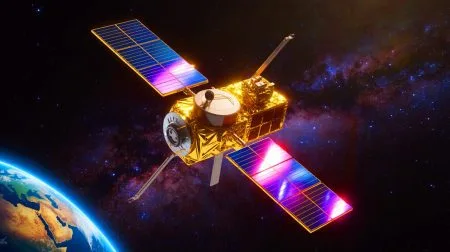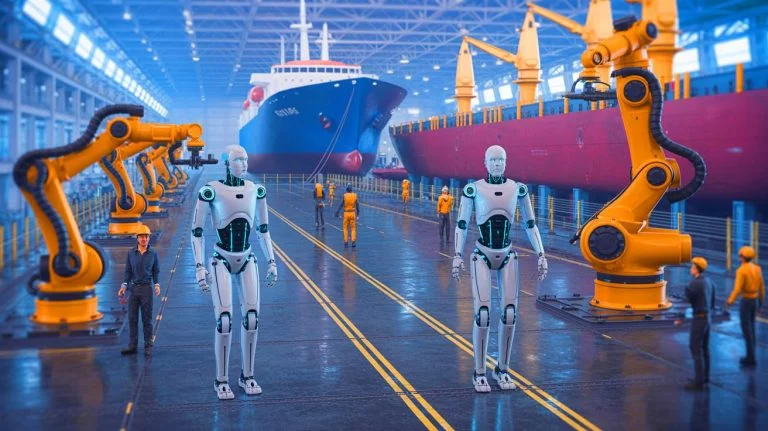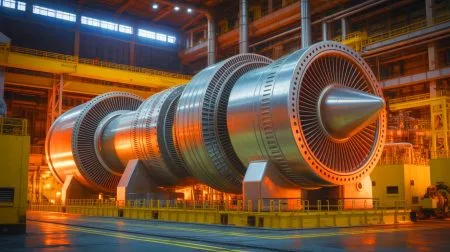| IN A NUTSHELL |
|
Innovation in the shipbuilding industry is taking a remarkable turn as humanoid and quadruped robots are being tested in real-world conditions. The collaboration between Neura Robotics and Hyundai’s subsidiaries marks a significant shift towards automation in one of the world’s most challenging industries. This partnership aims to revolutionize the shipyard environment by enhancing safety, efficiency, and productivity through intelligent robotics. With the introduction of Neura’s 4NE1 humanoid robots, the industry is poised to witness a transformation that could redefine traditional shipbuilding practices.
Revolutionizing Shipbuilding with Robotics
The shipbuilding industry stands on the brink of a technological revolution as Neura Robotics introduces its advanced humanoid platform, the 4NE1, into the fray. This strategic collaboration with HD Hyundai Samho and HD Hyundai Robotics is designed to integrate intelligent robots into the shipyard environment, thereby improving operational efficiency and productivity. The 4NE1 robot, known for its cognitive capabilities and adaptive learning, is set to tackle complex tasks traditionally handled by human workers.
HD Hyundai Samho provides the ideal testing ground for these humanoid robots, offering hands-on, real-world conditions to assess their practicality and performance. Meanwhile, HD Hyundai Robotics lends its technical expertise in welding automation, contributing path-learning data and overseeing performance validation. This partnership is a testament to the growing interest in applying robotics to heavy industries, reducing manual labor and enhancing safety protocols. It’s a progressive step aimed at streamlining complex manufacturing processes within global shipyards.
Building the Smart Shipyard
The vision of a smart shipyard is becoming a reality as US robotics firm Persona AI partners with South Korean companies to develop humanoid robots for shipbuilding tasks. This collaboration focuses on enhancing productivity, reducing worker fatigue, and improving safety in industrial environments. By 2027, the partnership aims to deploy humanoid welding robots in shipyards, marking a major step toward shipyard automation.
The robots are specifically designed to withstand the harsh and complex conditions of shipbuilding yards, where they will perform advanced welding tasks traditionally labor-intensive and high-risk. The development of rugged hardware and AI-based control systems is central to this initiative, enabling precise, autonomous welding. Each partner plays a crucial role: the robotics firm leads the development of hardware and control systems, Vazil designs specialized welding equipment, and HD KSOE manages live deployment and field engineering support. This ambitious project signifies a pivotal move towards creating shipyards where robots and human workers collaborate seamlessly.
“Robot Did the Surgery”: U.S. Doctors Complete First-Ever Heart Transplant Without Opening the Chest
Collaborative Expertise and Innovation
The partnership between Neura Robotics and Hyundai’s subsidiaries highlights the importance of collaborative expertise in advancing industrial automation. By pooling resources and knowledge, these companies aim to validate the potential of humanoid and quadruped robots in increasing efficiency and safety. The initiative addresses a growing shortage of skilled labor in the industry, offering a practical solution through automation.
At the Automatica trade fair in Munich, the partnership was formally announced, showcasing the commitment to revolutionizing shipbuilding. By combining the expertise of all three partners, the project aims to test robotic solutions under demanding industrial conditions, ensuring they meet the rigorous requirements of shipbuilding operations. The outcome could significantly enhance safety protocols and streamline complex manufacturing processes, paving the way for more advanced automated systems in shipyards worldwide.
The Future of Shipyard Automation
The future of shipyard automation is promising, with significant advancements on the horizon. The partnership with Persona AI aims to develop humanoid robots capable of performing precise and autonomous welding tasks. With a prototype expected by the end of 2026 and full commercial deployment the following year, the project represents a major step toward building smart shipyards.
These efforts highlight the potential of robotics to transform the shipbuilding industry, offering safer and more efficient alternatives to traditional practices. By embracing innovation and collaboration, the industry is poised for a new era of productivity and safety. As we look to the future, how will these technological advancements further reshape the shipbuilding landscape?
Did you like it? 4.5/5 (23)






Wow, robots in shipyards? That’s a game-changer! 🤖
How do these robots compare in cost to hiring human welders?
Great article! Thanks for the insights on shipyard automation.
Can these robots handle the harsh conditions of a shipyard?
I’m skeptical. What happens if the robots malfunction?